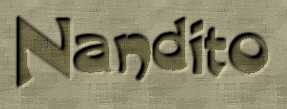 | Central Venous Catheterization The placement of a central venous line is an essential technique in the treatment of many hospitalized patients. This video demonstrates the placement of a central venous catheter in the internal jugular vein and considers complications and how to avoid them. Graham AS, Ozment C, Tegtmeyer K, Lai S, Braner DAV. N Engl J Med 2007;356:e21, May 24, 2007. |
 | Kabrhel C, Thomsen TW, Setnik GS, Walls RM. N Engl J Med 2007;356:e15, April 26, 2007. |
 | Thomsen TW, Shen S., Shaffer RW, Setnik GS. N Engl J Med 2006;354:e19, May 11, 2006. |
 | Positive-Pressure Ventilation with a Face Mask and a Bag-Valve Device Providing positive-pressure ventilation with a face mask and a bag-valve device can be a lifesaving maneuver. Although seemingly simple, the technique requires an understanding of the airway anatomy, the equipment, and the indications. This video demonstrates the equipment and technique used to provide positive-pressure ventilation with a face mask and a bag-valve device. Ortega R, Mehio AK, Woo A, Hafez
|

















0 comentarios:
Publicar un comentario